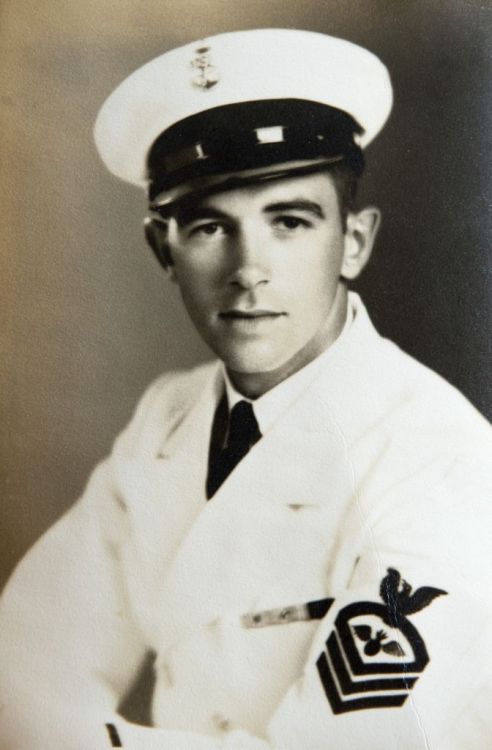WENTZLAFF-EDWARD
EDWARD LOUIS WENTZLAFF

CWO

SURVIVED USS ARIZONA SINKING
DECEMBER 7, 1941
Aviation Ordnanceman Second Class Edward Louis Wentzlaff was fortunately one of the 335 crew members who survived the sinking of USS Arizona on December 7, 1941 when Japanese planes unexpectedly attack Pearl Harbor. On that tragic day, 1,177 officers and men died on the Arizona. Wentzlaff was waiting on the deck for church services to begin. “As I looked towards the naval hospital where the channel goes out to sea, this airplane made a big turn and it had a big red ball on the side. I didn’t say anything at the time, I just looked and the next thing you know, the guy’s machine gunning us,” he said. Although Wentzlaff heard an order for everyone to go below decks, he instinctively headed to his battle station, a decision he felt probably saved his life. Just minutes into the battle, an armor-piercing bomb, dropped from high above, struck the forward area of Arizona’s bow, penetrated four steel decks to the ammunition magazine, and exploded there with a huge blast. The blast blew the Number One turret into the air, a plume of black smoke rose, and an expanding fireball shot five to six hundred feet into the air. Flames engulfed the ship and many crewmen found their clothes on fire, burning off most of their clothes, hair, and skin.
The ship had been mortally wounded and as it settled to the bottom the abandon ship order was given. Wentzlaff said he was too terrified to jump overboard as flames three feet high leapt on the surface of the water from fuel pouring out of the ship. Instead, with another sailor, they ran down a gangway to an admiral’s barge which was tied to the ship. As it was being dragged down by the sinking ship, Wentzlaff frantically managed to cut it loose while his companion started the engine. As waves of Japanese planes continued to strafe the harbor, the two rescued a number of survivors from the burning water who had leaped from Arizona. “Some of them were coming apart, they were that badly burned,” Wentzlaff said. The two men made a number of trips carrying survivors to nearby Ford Island.
Aside from singed eyebrows and hair from the fires that raged on board, Wentzlaff was not injured. Wentzlaff, only one day away from the end of his enlistment period, wasn’t permitted to leave the Navy as World War Two began. Instead, he was soon transferred for duty aboard the carrier USS Yorktown. At the Battle of Midway in June 1942, Yorktown was sunk, and Wentzlaff fortunately survived his second sinking. He remained on active duty in a variety of assignments until being discharged in 1946 with the rank of Chief Warrant Officer. He wanted to be a lawyer and enrolled at the University of Minnesota, but large class size, boosted by returning vets on the GI Bill, proved overwhelming. He married and farmed corn and soybeans for 40-years. In addition to farming, Wentzlaff served as mayor of Butterfield, Minnesota, for four years, served as a county commissioner, was head of the local post of the Veterans of Foreign Wars, and often spoke to school and veteran groups about Pearl Harbor.
In 2011, on the 70th anniversary of the attack on Pearl Harbor, Wentzlaff made his tenth visit to the USS Arizona Memorial. He said he found the visits were not therapeutic as, “Every time I go back there I feel worse.” He said he spent a lifetime fighting the haunting memories of fires, screams and rocking explosions. He refused to forgive the Japanese, saying, “They tried to kill me. Why would I forgive them?” CWO Edward Louis Wentzlaff died on September 10, 2013 and at his request, the urn containing his ashes has been placed in the wreckage of the Arizona, so he can spend eternity with his crewmates.
Submitted by CDR Roy A. Mosteller, USNR (Ret)

